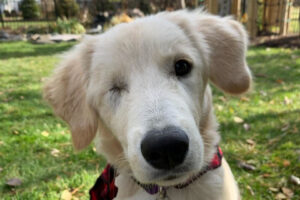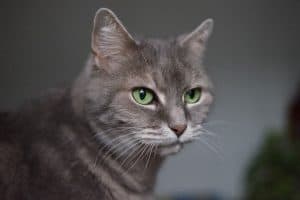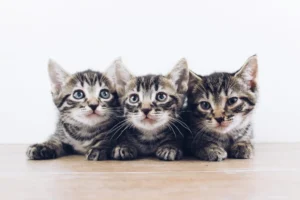Cats and owls, despite being vastly different creatures, share some striking physical similarities that have puzzled animal enthusiasts for years. From their wide-eyed stare to their sharp claws, these two animals seem to have more in common than meets the eye.
Why do cats and owls look alike?
Evolutionary Adaptations
Cats and owls may look alike due to evolutionary adaptations that have helped them survive in their respective environments. One theory suggests that both animals developed similar physical characteristics, such as large eyes and sharp claws, to enhance their hunting abilities. These features have allowed them to become efficient predators, securing their place at the top of the food chain.
Interestingly, both cats and owls share a common ancestor known as the miacids, which were small, nocturnal mammals that lived around 60 million years ago. This shared ancestry may explain why cats and owls have some physical similarities, despite belonging to different animal groups.
An external link to delve deeper into the topic of evolutionary adaptations in animals can be found here.
Nocturnal Behavior
Both cats and owls are nocturnal creatures, meaning they are most active during the night. This behavior is believed to have influenced their physical characteristics in similar ways. For example, their large eyes provide better night vision, allowing them to navigate dark environments and hunt their prey effectively.
In addition to their nocturnal habits, cats and owls also have keen hearing, which is crucial for locating prey in the darkness. This common trait may have led to the development of similar ear structures in both animals, further contributing to their physical resemblance.
When observing these fascinating creatures in the wild, it’s intriguing to see how their nocturnal behavior has shaped not only their lifestyle but also their physical appearance. The next time you spot a cat or an owl, take a moment to appreciate the evolutionary adaptations that make them such incredible predators.
Predatory Instincts
Both cats and owls share a common ancestry of being skilled hunters, which has influenced their physical similarities. With sharp claws for grasping prey and keen eyesight for spotting potential meals from afar, these predatory instincts have led to the development of similar features. Owls’ talons and cats’ retractable claws serve the same purpose of capturing their next meal with precision and efficiency. Additionally, their excellent vision allows them to navigate their environment with ease, whether it be in the darkness of night for owls or during the day for cats.
Stealth and Camouflage
The stealth and camouflage abilities of both cats and owls play a significant role in how they look and behave. Cats are known for their ability to blend into their surroundings, whether it’s the grassy fields they stalk in or the urban landscapes they call home. Owls, on the other hand, have specialized feathers that help them blend seamlessly into the trees where they perch while waiting for prey. Their silent flight further enhances their stealth, allowing them to surprise their target without warning. These shared tactics of remaining hidden until the perfect moment has influenced their physical appearance to aid in their hunting success.
Unique Insight: Both cats and owls have specialized ear structures that help them locate prey through sound. Cats’ highly sensitive ears can pick up the subtle movements of a mouse from yards away, while owls’ asymmetrically placed ears allow them to pinpoint the exact location of a rustling in the underbrush. This auditory advantage further solidifies their status as apex predators in their respective habitats.
Cats and owls often share similar habitats, such as forests, grasslands, and urban areas. This cohabitation has led to a phenomenon known as convergent evolution, where different species develop similar physical traits due to similar environmental pressures. In the case of cats and owls, their shared habitats have influenced the evolution of their eyes, which are both adapted for hunting in low light conditions. The distinctive vertical pupils of both cats and owls allow them to quickly adjust to changes in light levels, giving them a visual advantage when tracking prey at dawn and dusk.
Interesting Facts
- Both cats and owls are known for their exceptional night vision, thanks to a high concentration of rod cells in their retinas.
- Cats and owls have specialized feathers that enable silent flight and reduce noise when hunting prey.
- Owls have been associated with mystery and wisdom in various cultures, while cats are often seen as symbols of independence and agility.
- Despite their differences in appearance, both cats and owls are skilled predators that play important roles in the ecosystems they inhabit.
For more in-depth information on convergent evolution and its role in shaping animal traits, you can explore this article from National Geographic: Convergent Evolution in Cats and Owls.
Conclusion
Cats and owls may appear to look similar due to convergent evolution, where unrelated species develop similar traits to adapt to similar environments. Both animals have forward-facing eyes to enhance depth perception for hunting, as well as sharp claws for capturing prey efficiently. These physical similarities showcase how evolution can lead to different species evolving similar features independently.
An intriguing connection between cats and owls lies in their shared nocturnal behavior. Both animals are known for their activity during the night, with keen senses that enable them to navigate darkness effectively. This shared behavioral trait further emphasizes their adaptive strategies for survival in low-light conditions.
When observing the physical characteristics of cats and owls, it is fascinating to note how their streamlined bodies, sharp beaks or elongated faces, and keen hearing abilities contribute to their hunting prowess. These shared traits offer a window into the intricate web of animal evolution, showcasing how various species can develop similar adaptations to thrive in their respective ecosystems.
One unique insight into the resemblance between cats and owls is the concept of camouflage. Both animals have adapted their fur or feathers to blend into their surroundings, aiding in stealthy hunting tactics. This evolutionary adaptation not only provides a survival advantage but also adds to the visual similarity between the two species, showcasing nature’s ingenious ways of equipping animals with tools for success in their habitats.
Overall, the intriguing connection between cats and owls goes beyond mere physical resemblance, delving into the intricate processes of adaptation and evolution. By exploring the shared traits and behaviors of these fascinating creatures, we gain a deeper understanding of the complex and interconnected world of nature.
Alex, a passionate animal lover, has experience in training and understanding animal behavior. As a proud pet parent to two dogs and three cats, he founded AnimalReport.net to share insights from animal experts and expand his knowledge of the animal kingdom.


![Adopting a Dog With One Eye? [5 Things to Know] one eyed white dog sitting on the bed](https://animalreport.net/wp-content/uploads/2022/12/one-eyed-white-dog-sitting-on-the-bed-300x200.jpeg)






